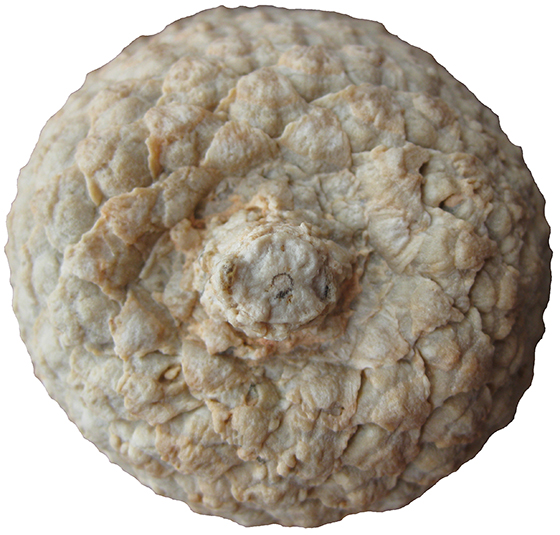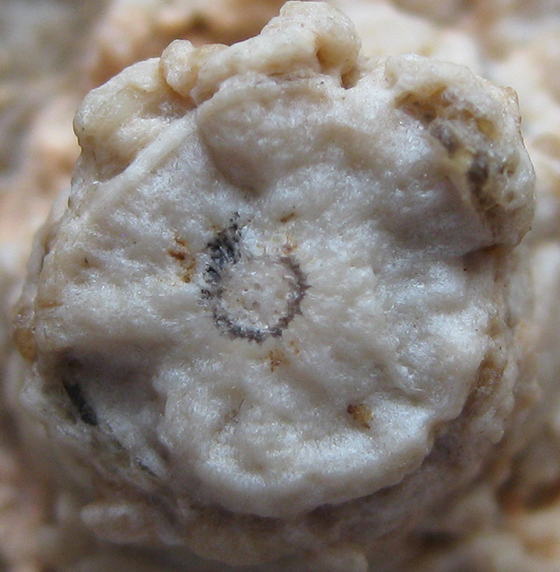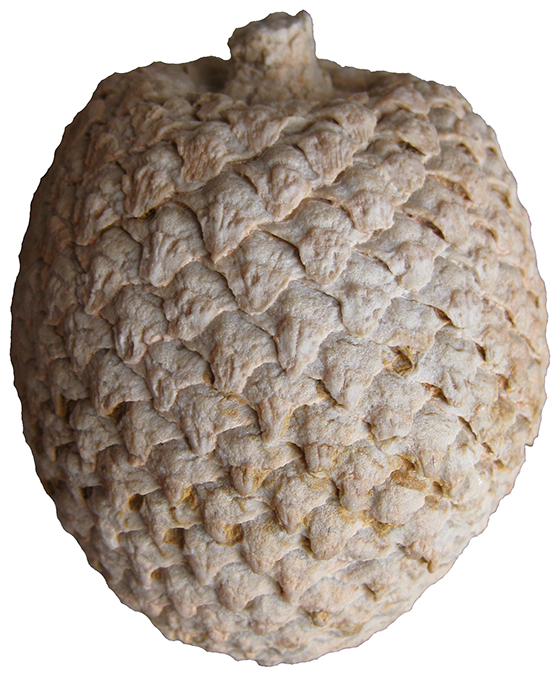
 |
 |
Jurassic
Period:
199.6-145.5 Million Years Ago
Gallery: Cerro Cuadrado
Gallery: Cerro Cuadrado
|
The following images of the specimen above zoom in on the cover scales. The images were taken with a Canon PowerShot SD770 IS Digital ELPH 10.0 MEGA PIXELS, cropped and resized in Adobe Photoshop CS6. The images were taken in sunlight outside. |
 |
 |
The cover scales on this cone are well preserved and culminate in narrow points. Images below show the top and bottom of this cone. |
 |
 |
 |
The image below shows a close-up of what may be signs of insect damage. |
 |
Bibliography |
Borror,
D.J. (1988). Dictionary of Word Roots and Combining Forms.
California: Mayfield Publishing Company. Rutishauser, R. & Peisl, P. (2001). Phyllotaxy. Encyclopedia of Life Sciences. Macmillan Publishers Ltd, Nature Publishing Group/www.els.net |











